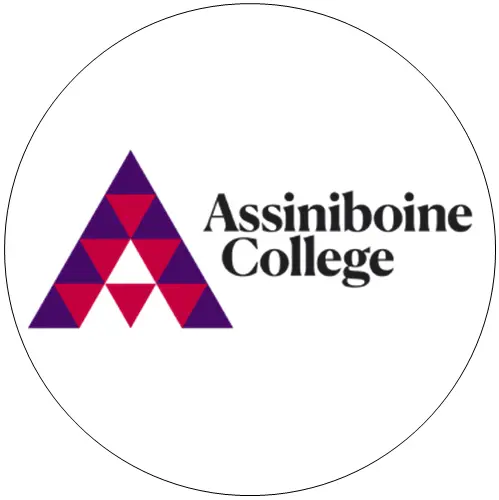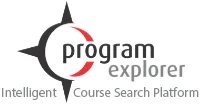• IELTS
IELTS Table Band Score 9 Model Answer
12341 Reads
3 min Read
The blog lists an IELTS Table sample question and then moves on to present two separate answers for the same table sample question. The first answer is a basic one while the next answer is a band score 9 sample answer. They have been written for the students to make a comparison. The blog ends with a few tips that students ought to keep in mind before writing a band score 9 answer for IELTS table questions.
.webp)
The question presented below is an IELTS Writing Task 1 that lists data in a table. The question further asks you to write a report using the data in this table in at least 150 words. A band score 9 or an advanced-level answer has also been included thereafter.
IELTS Table - Sample Question
You should spend about 20 minutes on this task.
The table below gives information about changes in modes of travel in England between 1985 and 2000.
Summarise the information by selecting and reporting the main features, and make comparisons where relevant.
Write at least 150 words.
Average distance in miles traveled per person per year, by mode of travel
| 1985 | 2000 | |
|---|---|---|
| Walking | 255 | 237 |
| Bicycle | 51 | 41 |
| Local Bus | 3199 | 4806 |
| Long distance bus | 54 | 124 |
| Train | 289 | 366 |
| Taxi | 13 | 42 |
| Other | 450 | 585 |
| All modes | 4740 | 6475 |
Also read : IELTS Exam Fee
What do you need to remember before writing an answer?
1.The years on the table are two. Trends don't exist. The only difference is from one year to the next. Just listing the data, such as "In 1985 A was x, but in 2000 A was y," is not a good idea. You have to compare things. Whose size was the largest? Which one was the smallest?
2.Use paragraphs, please! considers how to clearly organize the information. Typically, you should begin with (i) Introduction and (ii) Overview (iii) Body Paragraph 1 (iv)Body Paragraph 2.
3.Consider which categories increased and which categories dropped as you try to organize the data. Although it is more challenging, you can also put them into groups according to characteristics they share, such as using public transportation or being non-motorized.
4.When you report the statistics, try to use a variety of synonyms. For instance, if you say "increase" once, say "go up," "climb," "raise," etc. the next time. Also remember to change grammatical structures(for example, "a substantial rise" vs. "increased greatly").
5.Keep in mind that your report MUST include an overview that informs the reader of the crucial information (what stands out or is most noticeable). This section shouldn't contain any specific data.
Also read: IELTS Registration
IELTS Table - Basic Answer
The table details the various modes of transportation in England between 1985 and 2000.
Overall, people traveled more miles annually in 2000 than they did in 1985, despite declines in walking, bicycling, and local bus usage.
The typical person traveled 4740 miles annually in 1985. However, by 2000, this had almost doubled to 6500 miles annually. Car (3199 to 4806) and train saw the largest increases in total miles traveled (289 to 366). The average distance covered by long-distance buses increased from 54 to 124 miles, more than doubling, while the average distance covered by taxis increased significantly from 13 to 42 miles.
On the other hand, local bus mileage drastically decreased from 429 to 274. The typical miles traveled on foot and by bicycle also saw slight decreases. Walking decreased from 255 to 237 miles per year, while cycling dropped from 51 to 41 miles. The number of miles traveled by "other" modes of transportation also increased, rising from 450 in 1985 to 585 in 2000.
Also read: IELTS Exam pattern
IELTS Table - Band Score 9 Answer
The table gives a general summary of the average distance traveled between 1985 and 2000 by a typical person in the UK using different modes of transportation.
Overall, it is immediately apparent that over the fifteen years, the number of miles traveled annually by the average person increased significantly, but the typical distance traveled by each particular mode of transportation varied significantly.
The average number of miles driven per year by the car, which was the most popular mode of transportation in both years, increased significantly from 3199 to 4806. Long-distance bus and train travel also increased significantly, with the former increasing from 54 to 124 miles and the latter from 289 to 366 miles. Travel by taxi saw the highest proportional increase in average miles, more than tripling from 13 to 42 miles per year.
Walking and cycling, on the other hand, witnessed a modest decline in overall average miles traveled. Cycling saw a fall from 51 to 41 miles, while walking saw a decrease from 255 to 237 miles. Lastly, it should be emphasized that the number of "other" types of transportation increased by slightly under a third to 585 in 2000.
Also read: IELTS Syllabus
Tips for writing IELTS Table Answers
- You need to write all your key features of the given table in the overview. Remember, just one key feature is not enough.
- Organize your answer to IELTS Table questions in paragraphs.
- Not all details in the table need to be written. You can group the listed details in the table in averages or ranges as well.
- Do not write too many details in your answer, Select a few and explain them properly.
- You have to make sure that you write at least 150 words but you should aim for writing about 180 words.
- You need to use a variety of linking words or connectors in your answer, e.g. on the other hand, conversely, as compared to, in comparison etcetera.
- You need to be careful while writing sentence structures. Use a variety of grammatical structures and avoid repetition.
- There is a limit to how many synonyms you can use for a word. Some words will still be repeated. As long as you have paraphrased these words and have avoided grammatical mistakes, you should be fine.
Also read: IELTS - Overview
FAQ
Get great articles direct to your inbox
The latest news, articles, and resources, sent straight to your inbox every month.
Popular Universities to Study Abroad
World class education waiting for you.

Binghamton University - State University of New York
New York, USA • 64 Programmes
Tuition Fee : USD 26500-27000 / year

Health Careers International (HCI) Group - Institute of Health and Nursing Australia (IHNA) - Sydney Campus
New South Wales, Australia • 2 Programmes
Tuition Fee : AUD 7500-8000 / year

University of Massachusetts Dartmouth
Massachusetts, USA • 98 Programmes
Tuition Fee : USD 30000-31000 / year

Assiniboine Community College - North Hill Campus (Brandon)
Manitoba, Canada • 10 Programmes
Tuition Fee : CAD 16000-21000 / year
.png)
Coast Mountain College - Prince Rupert Campus
British Columbia, Canada • 22 Programmes
Tuition Fee : CAD 13500-29000 / year

Shorelight Group - Adelphi University
New York, USA • 79 Programmes
Tuition Fee : USD 27500-47900 / year

The University of Waikato - Tauranga Campus
Tauranga, New Zealand • 116 Programmes
Tuition Fee : NZD 25900-38960 / year

Lester B. Pearson School Board - West Island Career Centre
Quebec, Canada • 8 Programmes
Tuition Fee : CAD 10000-48500 / year
Popular English Language Proficiency Exams
IELTS Online
- Live Classes
Blogs and Articles
Curated content to keep you updated on the latest education trends, news and more.
Updated on • Jul 17,2025 05:33 PM IST • USA
PTE Accepted Universities in Australia
Updated on • Jul 17,2025 05:09 PM IST • PTE
Part-Time Jobs for International Students in Australia
Updated on • Jul 17,2025 03:44 PM IST • Australia
Updated on • Jul 12,2025 04:02 PM IST • USA
Updated on • Jul 11,2025 11:32 AM IST • Education
CPT vs OPT: Meaning, Difference, and How to Apply
Updated on • Jul 11,2025 10:40 AM IST • USA
Masters in Computer Science in UK: Top Colleges, Eligibility, Scholarships
Updated on • Jul 10,2025 11:29 AM IST • study in the UK
Highest Paying Jobs in the World
Updated on • Jul 08,2025 01:40 PM IST • Study Abroad
MBA in Australia for Indian Students: Best Universities, Requirements, Scholarship, Courses, Jobs
Updated on • Jul 08,2025 01:35 PM IST • Australia
Canada vs Australia: Which Country is Better for Indian Students in 2025?
Updated on • Jul 07,2025 12:46 PM IST • Education
France vs Germany: Which Is Better for International Students?
Updated on • Jun 30,2025 05:15 PM IST • Education
Top 10 Agricultural Universities in USA
Updated on • Jun 27,2025 05:25 PM IST • USA
Most In-Demand Future Careers in 2025
Updated on • Jun 26,2025 04:41 PM IST • Education
How Much Do Nurses Make in the U.S.?
Updated on • Jun 23,2025 03:59 PM IST • USA
Updated on • Jun 21,2025 02:00 PM IST • USA
MBA in UK: Universities, Eligibility, Types, and Career Opportunities
Updated on • Jun 19,2025 04:09 PM IST • UK • study in the UK
Scholarships in France for Indian Students
Updated on • May 29,2025 05:22 PM IST • France
Intakes in Dubai for Indian Students
Updated on • May 27,2025 03:34 PM IST • Study in Dubai
France Student Visa 2025 – Requirements, Fees, Checklist & Application Process
Updated on • May 23,2025 03:36 PM IST • France
MBA in France for Indian Students in 2025
Updated on • May 22,2025 05:35 PM IST • France
Related Blogs and Articles
A little effort to provide an authentic and reliable content for keen readers!!
Updated on • 11-04-2025 • IELTS
Describe Your Hometown IELTS Speaking Part 1 Topic
Updated on • 07-04-2025 • IELTS
PTE vs IELTS : Know the Difference and Which is Easier?
Updated on • 21-03-2025 • IELTS
IELTS Exam Dates 2025 in India
Updated on • 18-01-2025 • IELTS
IELTS Reading Practice Tests 2025: Reading Passage and Sample Questions
Updated on • 15-01-2025 • IELTS
IELTS Letter Writing Topics 2025
Updated on • 15-01-2025 • IELTS
Canada IELTS band requirements 2025
Updated on • 10-01-2025 • IELTS
Updated on • 25-11-2024 • IELTS
Updated on • 21-11-2024 • IELTS
Updated on • 02-11-2024 • IELTS
Linking Words for IELTS Speaking - Word List & Tips
Updated on • 25-10-2024 • IELTS
IELTS Writing Task 2 - Academic and General Topics with Sample Answer
Updated on • 25-10-2024 • IELTS
IELTS Writing Task 2: Tips, Lessons & Models
Updated on • 25-10-2024 • IELTS
IELTS Test Report Form (TRF): Number, Tracking, Validity and Sample
Updated on • 25-10-2024 • IELTS
IELTS Speaking Samples and Answers
Updated on • 25-10-2024 • IELTS
Updated on • 25-10-2024 • IELTS
Updated on • 25-10-2024 • IELTS
IELTS Sample Charts for Writing Task 1 Practice
Updated on • 25-10-2024 • IELTS
IELTS GT Writing Task 1/ IELTS Letter Writing
Updated on • 25-10-2024 • IELTS
Updated on • 25-10-2024 • IELTS















